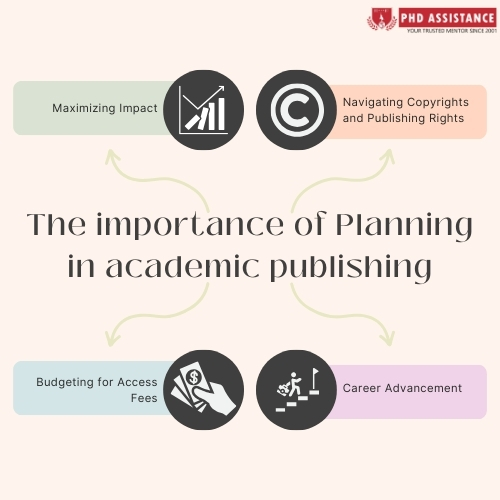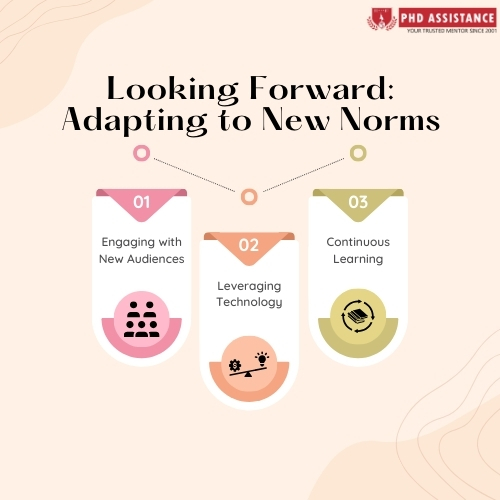Unveiling the Future of Academic Publishing in Social Sciences: A Guide to Strategic Planning
I was tingling with excitement when I was walking past the bustling corridors of those tall buildings, just completed presenting my latest research on “Urban Poverty Dynamics”. Now standing at the annual social science symposium thinking about where the actual journey had begun. Months earlier I made a strategic decision to publish my study on a digital platform known all well for its interactive data visualization tools, and the decision paid off. Accessing my work from all corners of the world, scholars improved its reach and effect beyond my most wild expectations. My experience was one of the many real-life examples of how rapidly academic publishing is changing these days, and to me it personally feels like I’m at the forefront of this all this “electrifying” evolution. Now, for all the academic enthusiasts out there, I’d like to share with you some insightful and interesting information into the ever-changing field of academic publishing.
Academic publishing, especially in social sciences, is experiencing major shifts. As we march into the digital era, the way research is published, approached, and used is changing, full of challenges and all kinds of possibilities for scholars internationally. In this context, the blog is not only going to explore the field of social sciences in publishing, but it also is crafted in a way that it helps all the academic enthusiasts who are eager to get their work published globally by guiding them where to begin their journey in academic publishing.
The Changing Academic Publishing Scene. Since books and journals are the main venues for disseminating scholarly work academic publishing has traditionally focused on these two media. All the same significant changes have begun with the emergence of digital technology. Open access platforms digital repositories and social media are becoming more important in today’s dissemination and consumption of research findings.
- The open access movement is unarguably the most important trend affecting academic publishing in today’s world. This greatly increases the visibility and impact of researchers’ study by giving free, unrestricted access to peer-reviewed scholarly research papers. For social scientists, this is a golden opportunity to reach a broader audience including other social scientists professionals, and the commoners who can make use of this information to promote social changes in society for the greater good. (Kaiser, 2023)
- . Digital Media and Interactivity, leveraging digital media’s capacity to create more interactive and engaging content is vital for the future of academic publishing. Consider research articles accompanied by interactive tools, videos, and datasets that enable readers to view and work with the data directly. In my opinion, making academic discourse more dynamic, this approach not only makes it better for readers’ grasp and participation but also improves the whole experiences of readers.
- Collaborative Technologies, researchers nowadays are collaborating more internationally thanks to the emergence of online collaborative platforms. Day by day, there are more various research outputs resulting from social scientists’ increased ability to collaborate across geological borders.
- Alternative metrics such as social media mentions, blog posts, and downloads complement (and sometimes challenging) traditional impact metrics based on citations. This reflects a broader shift in perceiving the impact of research, acknowledging the importance of reaching audiences outside of academia.
The Importance of Planning in Academic Publishing

Strategic planning in academic publishing involves more than just choosing the right journal or deciding between open access and traditional publication routes. It requires a holistic approach to managing one’s research from inception to dissemination. Here’s why planning is crucial:
- Maximizing Impact: Effective planning helps researchers identify the best channels for disseminating their work, considering factors like target audience, open access benefits, and potential media coverage. This strategic approach ensures that research reaches and influences the intended stakeholders.
- Navigating Copyrights and Publishing Rights: Understanding and negotiating publishing rights are more critical than ever in the digital age. Strategic planning includes deciding how to license your work, considering implications for future research and publication.
- Budgeting for Access Fees: With the rise of open access, publication costs is vital. Many open-access journals require authors to pay article processing charges (APCs). Budgeting for these fees must be considered early in the research process.
- Career Advancement: Strategic publishing can significantly impact career advancement. By targeting high-impact journals and platforms and utilizing diverse dissemination strategies (including social media and public engagement), researchers can enhance their visibility and reputation in the field.
Looking Forward: Adapting to New Norms

As the academic publishing landscape continues to evolve, social scientists must stay informed about the latest trends and adapt their strategies accordingly. This might include:
- Engaging with New Audiences: Researchers should look beyond academic circles and consider how their findings can benefit society at large. This involves writing in more accessible language and engaging with the media and policymakers.
- Leveraging Technology: One should always adopt to new tools and emerging platforms available for digital publishing and collaboration, it can help researchers and academic people improve their reach and making a substantial impact of their work in the field. (Ravi, 2024)
- Continuous Learning: Keeping up to date with all the changes in publishing norms, technology, and copyright laws is vital for productive planning and successful publication of any research study.
In all essence, it cannot be denied that there will be great potential to increase the sway and reach of research in the social sciences by means of academic publishing soon. These prospects do, however, need careful preparation and versatility. Scientists who are in the field of social science like mine can tremendously improve the weight of their work and make a meaningful contribution to both societal advancement and worldwide awareness by skillfully roving this dynamic landscape. Plus, for all-encompassing assistance with your academic path, I would suggest thinking about all the ways to manage your time best and utilizing programs such as PhD Assistance, which provide professional advice on research and publication tactics.
- “5 Scholarly Publishing Trends to Watch in 2022.” Blog.scholasticahq.com, blog.scholasticahq.com/post/scholarly-publishing-trends-2022/. Accessed 1 May 2024.
- Kaiser, Tamás, et al. “Publishing Trends in Political Science: How Publishing Houses, Geographical Positions, and International Collaboration Shapes Academic Knowledge Production.” Publishing Research Quarterly, vol. 39, no. 3, 14 July 2023, pp. 201–218
- Center, Academic Analytics Research. “As the Volume of Social Sciences Journal Articles Increases, Academic Book Publication Is Slowing.” Phys.org, phys.org/news/2022-02 -volume-social-sciences-journal-articles.html. Accessed 1 May 2024.
- Ravi, Rakhesh. “Top 5 Academic Publishing Trends That Will Dominate in 2024.” Apex Covantage, 2 Jan. 2024, apexcovantage.com/blog/5-trends-in-scholarly-academic -publishing-for-2024/. Accessed 1 May 2024.



